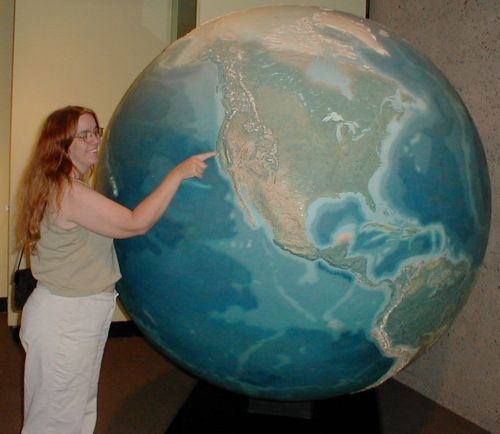(Look at that vertical displacement!)
(edit: A couple of friends have since reminded me that "displacement" is a specific geologic term with regard to quakes. This offset might not be ground displacement as much as separation due to liquefaction or localized sinking.)
(above photos by digitalsadhu
(above photos by John Stewart
(above photos by Brendan Gloistein
After I looked at these, I reminded my husband that we haven't replaced the attachment hardware for our bookshelves, so we'll do that this weekend.
We also need to re-inventory our quake kit and find out what we need to replace. My favorite list of supplies is sfgate.com.
Folks from Christchurch respond to last night's big quake:
The panicky woman couldn't have known then (and many folks don't know, in general) that the quake wasn't really big enough for a tsunami, especially given as it was centered under land. They're usually from bigger quakes centered under water, with specific seismological conditions. But when the ground has bounced you out of bed in the wee hours of a winter's morning, that's probably not your first thought.

4 comments:
Given recent (last few years) news and emphasis, almost anyone might think "there's been a quake, do we need to head uphill because of a tsunami?"
Given that we had tsunami warnings after the major quake in Thailand and such, one could be forgiven for thinking that, yes.
The majority of our local fault line is inland along that big range of mountains called the Southern Alps. On the other hand, the city's built on an alluvial flood plain so subsidance from further quaking would also be a reasonable enough fear to make a trip to higher, solid ground worth considering. And if the big crater lake/harbour on the other side of the Port Hills had decided to wake up we'd have been pretty much screwed anyway...
Oh yes, I'm completely not saying "stupid git shouldn't have panicked." Not everyone has read to find out where within their immediate areas they'd be safer in a tsunami, and enough of Christchurch is low and near the water to be inudated. (I don't know what the offshore geology is like -- it matters. For instance, after the Alaska earthquake in 1964, two different towns, right near each other, on the Northern California coast had very different effects from the ensuing tsunami, because of their different offshore geology.)
But given general knowledge of tsunamis, and combine that to the amount of information people would have immediately after a quake, and middle-of-the-night sleepy reaction, I can see why people would head for the hills.
It's horrifying to see these photos from the earthquake. I am most interested in the ones showing the book case and tool box. Recently I saw an earthquake simulator. They had furniture and things that were strapped down and things that were not. After seeing it simulate the movement of an earthquake it made me realize that getting earthquake straps is a very wise and inexpensive way to protect my family and friends. There are times when the quake is just large enough to move furniture, but not large enough to need supplies. I strongly encourage everyone to think of all things to protect your loved ones. Thanks for your good work with this blog!
Post a Comment